Survival
© 2020–2022 Great Minds PBC
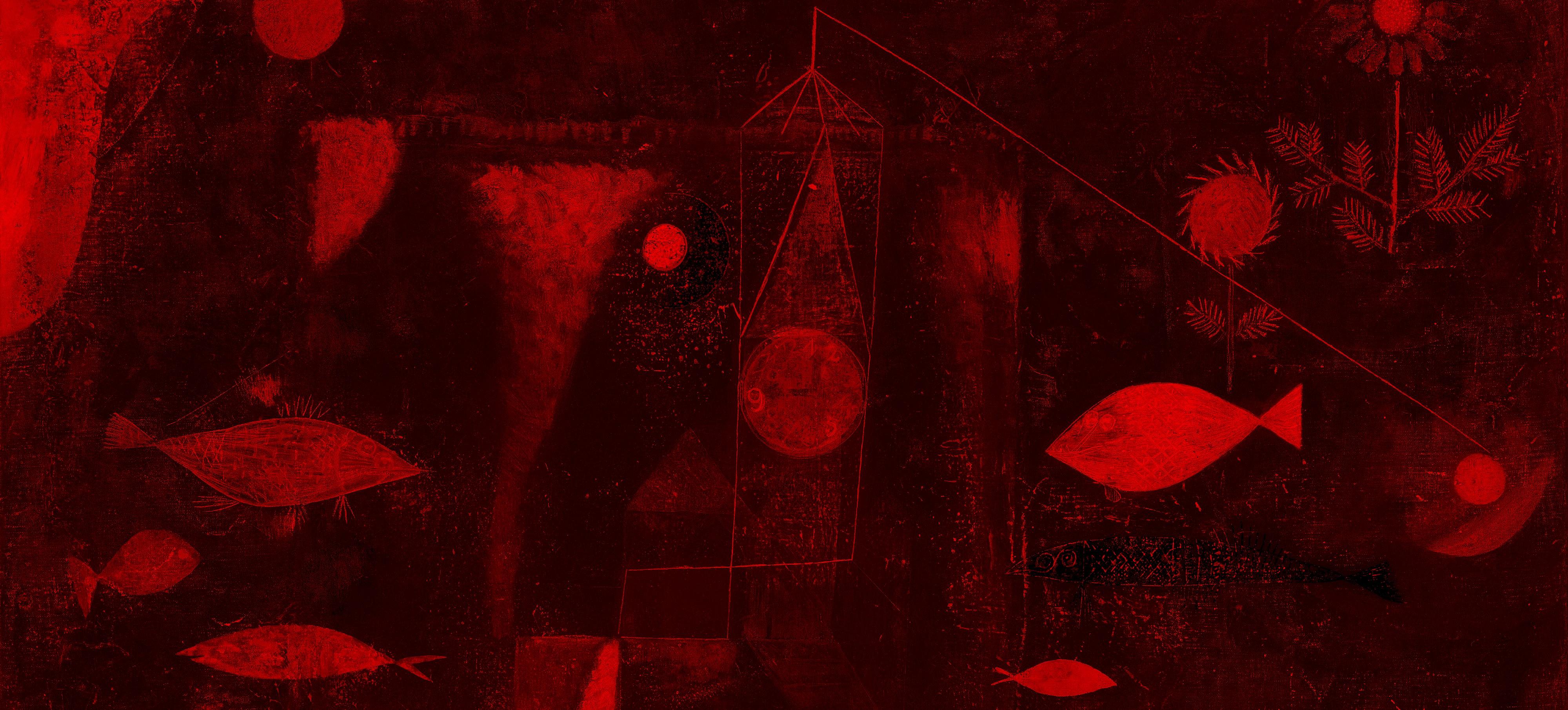
This presentation is for use with Great Minds PhD Science® curriculum and for classroom presentation only. Reproduction and distribution of these slides, in whole or in part, are strictly prohibited. Additionally, these slides may not be altered in any way. For more information or to purchase additional PhD Science materials, visit greatminds.org.



© Great Minds PBC 2 LEVEL 1 MODULE 1 Survival Concept Lesson Concept 1 1 2 3 4 5 6 7 8 9 Engineering Challenge 10 11 12 13 14 15 Concept 2 16 17 18 19 20 21 Concept 3 22 23 24 25 26 Socratic Seminar and End-of-Module Assessment 27 28 29
Lesson 1

© Great Minds PBC
What did you observe below the surface?


© Great Minds PBC 4 Logbook, page 1
Discuss Pond Environments


© Great Minds PBC
5
Key Term pond
a small area of water surrounded by land

© Great Minds PBC 6
What do you think you might observe below the surface of the water?

© Great Minds PBC
What do you think you might observe above the water in a pond environment?
7
How can we learn more about pond environments?

© Great Minds PBC
8
Make Observations through Reading


© Great Minds PBC
9



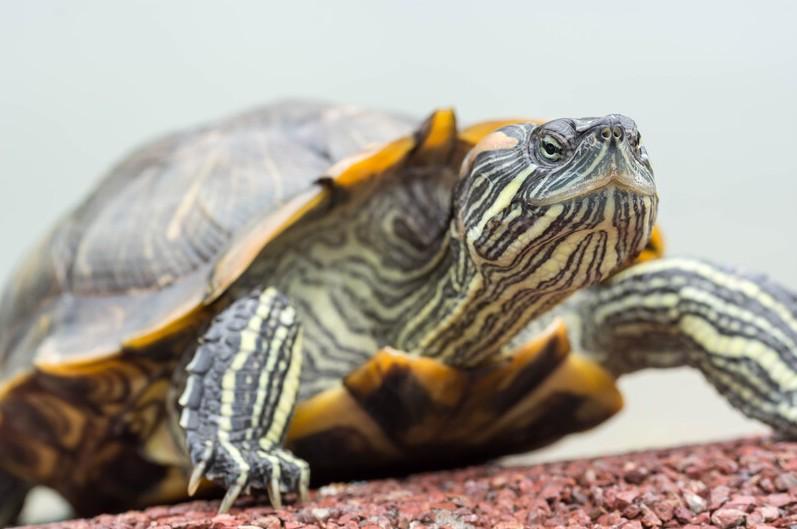

© Great Minds PBC 10 Read OverandUnderthePond, pages
1–33
Pond Plant and Pond Animal Chart

© Great Minds PBC
11
Where in a pond environment do you think these plants and animals live?

© Great Minds PBC
12
Why do you think these two animals live in different areas of the pond environment?
What do you think is the same about the two animals?
How are pond plants similar to and different from pond animals?

© Great Minds PBC
13
Notice and Wonder

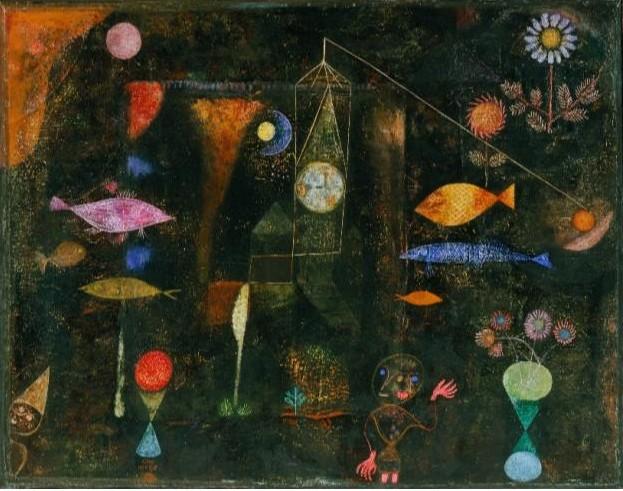
© Great Minds PBC
14
Do you think Fish Magic shows an environment found in nature?
Why or why not?

© Great Minds PBC
15

© Great Minds PBC
16 Homework
Observe the environment around your home. Draw or write a list of local plants and animals you observe.
Lesson 2

© Great Minds PBC
Pond Plant and Pond Animal Chart
How

© Great Minds PBC
18
are plants different from animals?
How are plants similar to animals?

© Great Minds PBC
19
Why is it easier to notice the differences between plants and animals than to notice the similarities?
How are pond plants similar to and different from pond animals?

© Great Minds PBC
20
Sort Animal Body Part Cards

© Great Minds PBC
21
How did your group sort the animal body part cards?

© Great Minds PBC 22
How are the body parts in each category similar?

© Great Minds PBC
23
How are they different?
Sort Plant Body Part Cards

© Great Minds PBC
24
How did your group sort the plant body part cards?

© Great Minds PBC 25
How are the body parts in each category similar?

© Great Minds PBC
26
How are they different?
Describe Similarities and Differences between Body Parts

© Great Minds PBC
27
How are pond plants similar to and different from pond animals?
How are plants and animals similar?
How are plants and animals different?

© Great Minds PBC
28
Develop Anchor Chart

© Great Minds PBC
29
Develop Driving Question Board
How do pond plants and pond animals

© Great Minds PBC
30
survive in their environment?
a picture of your favorite plant or animal. Label its body parts and make a title.

© Great Minds PBC
31 Homework
Draw
Lesson 3

© Great Minds PBC
Notice and Wonder

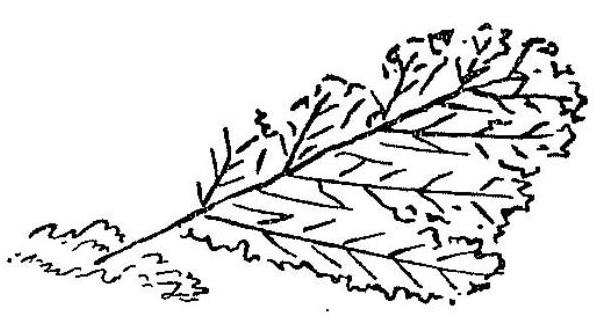
© Great Minds PBC 33
Develop Initial Models


© Great Minds PBC
34 Logbook, page 3
Develop Anchor Model

© Great Minds PBC
35
How do pond plants and pond animals survive in

environment?
© Great Minds PBC
36
their

© Great Minds PBC
37
Do you think pond plants and pond animals use their body parts to help them survive in a pond environment?
Lesson 4

© Great Minds PBC
Heron Video

© Great Minds PBC 39
Body Part Chart

© Great Minds PBC
40
Think about what the animal is doing. What body part does the animal use to do that?
Minnows Video

© Great Minds PBC 41
Body Part Chart
Think about what the animal is doing. What body part does the animal use to do that?

© Great Minds PBC
42
Porcupine Video

© Great Minds PBC 43
Body Part Chart

© Great Minds PBC
44
Think about what the animal is doing. What body part does the animal use to do that?
What is similar about how these pond animals use their body parts?

© Great Minds PBC
45
Observe classroom animal.
How do pond plants and pond animals survive in their environment?
Crayfish Observation Video

© Great Minds PBC
46
How do you think crayfish use their body parts?

© Great Minds PBC
47
What are some other ways animals might use their body parts?

© Great Minds PBC
48
How do pond animals use their body parts to survive?

© Great Minds PBC
49
Prepare to Visit Animal Body Part Stations

© Great Minds PBC
50
Which body part do you think this model is like?
Visit Animal Body Part Stations

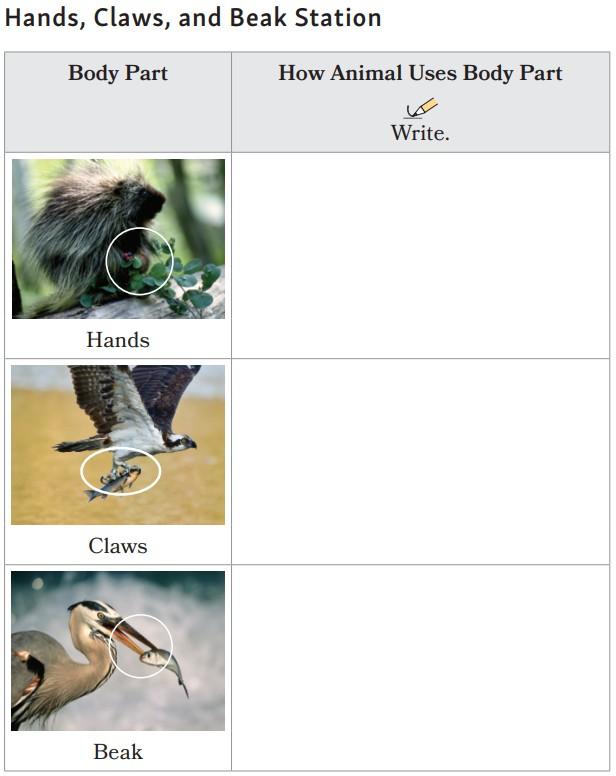


© Great Minds PBC
51 Logbook, pages 5–7

© Great Minds PBC
52
What is similar about what the body parts at this station do?
Key Term function
what a body part does

© Great Minds PBC 53
Anchor Chart

© Great Minds PBC
54
Lesson 5

© Great Minds PBC
body


© Great Minds PBC
56
Which
part do you think protects the turtle?
Why do you think that body part is good at protecting the turtle?
How do pond animals use their body parts to survive?

© Great Minds PBC
57
Visit Protective Animal Body

Part Stations
© Great Minds PBC
58
Why are protective body parts important?

© Great Minds PBC
59
Animal Body Part Class Chart

© Great Minds PBC
60

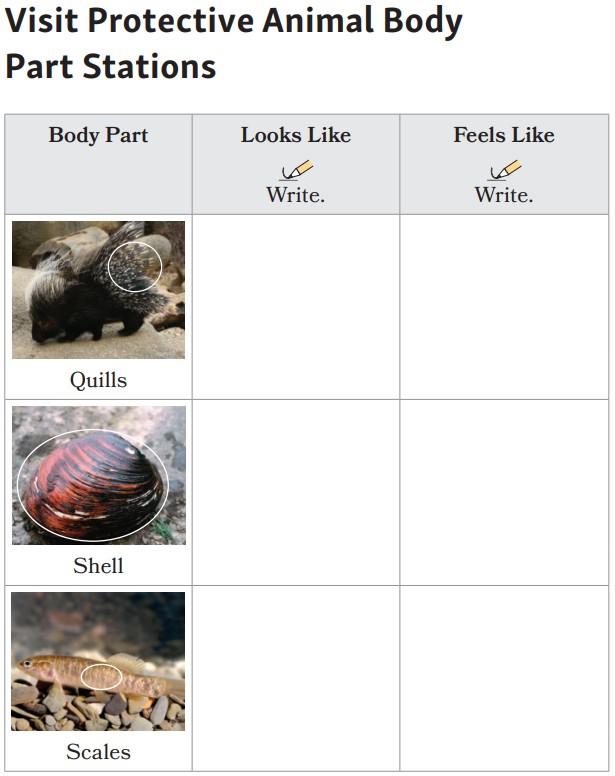
© Great Minds PBC 61 Logbook, page 9
Describe Protective Animal Body Parts

© Great Minds PBC
62
Why

© Great Minds PBC
63
are quills, a shell, and scales good for protection?
Animal Body Part Class Chart

© Great Minds PBC
64
Why do you think quills, a shell, and scales are

© Great Minds PBC
65
all hard?

© Great Minds PBC
66
Was it easier to pick up the pencil the first or the second time? Why?
What

© Great Minds PBC
67
makes your hand good at picking up objects like pencils?
Observe how pets or family members use their body parts. Identify the function of one body part. Describe the properties that make it good at that function.

© Great Minds PBC
68 Homework
Lesson 6

© Great Minds PBC
Porcupine Puzzle
Why
think porcupines

© Great Minds PBC
70
do you
have so many different body parts?
How do pond animals use their body parts to survive?

© Great Minds PBC
71
Observe Porcupine Body Parts

© Great Minds PBC
72
How does a porcupine use its body parts to survive in a pond environment?

© Great Minds PBC
73
Basic Needs of Animals Chart

© Great Minds PBC
74

© Great Minds PBC
75
Which other body parts do you think a porcupine uses to get food?
Basic Needs of Animals Chart

© Great Minds PBC
76
Why or why not?

© Great Minds PBC
Do you think a porcupine could survive without a mouth or a nose?
77
Do you think quills help a porcupine survive?
Why or why not?

© Great Minds PBC
78
Observe Crayfish Body Parts

© Great Minds PBC
79
How do you think a crayfish uses its body parts to survive in a pond environment?
How do pond animals use their body parts to survive?

© Great Minds PBC
80
Anchor Chart

© Great Minds PBC
81
Anchor Model

© Great Minds PBC
82
Lesson 7

© Great Minds PBC

© Great Minds PBC
84
How do the plants in Cup A look different from the plants in Cup B?
What do you wonder about these plants?

© Great Minds PBC
85
What might

© Great Minds PBC
86
have caused the plants in Cup B to look sick?

© Great Minds PBC
87
Which body parts do the plants in both cups have?
What do you notice?

© Great Minds PBC
88

© Great Minds PBC
Do you think plants also use their body parts to help them survive?
89
Why or why not?
Observe Plant Body Parts

Plant Body Part Function Chart
© Great Minds PBC
90
Which plant body part do you think takes in light?
Why do you think so?

© Great Minds PBC
91
Why do you think so?

© Great Minds PBC
Which plant body part do you think takes in water from the soil?
92
Model Leaf Function

© Great Minds PBC
93
Which plant body part do you think takes in light?
Why do you think that?

© Great Minds PBC 94
Model Root and Stem Functions

© Great Minds PBC
95
What happened to the water you added to the cup?

© Great Minds PBC
96
How do you know?

© Great Minds PBC
Which plant body parts seemed to take in the water?
97
Which plant body part do you think takes in water from the soil?

© Great Minds PBC
98
What happened after the roots took in water?

© Great Minds PBC
99
Why might a plant need water to travel through its body?

© Great Minds PBC
100
What do you think a stem does for a plant?

© Great Minds PBC
101
Plant Body Part Function Chart

© Great Minds PBC 102
What

© Great Minds PBC
103
happened to the plants when the roots were removed?

© Great Minds PBC
Do you think a radish plant could survive without leaves or a stem?
104
Why or why not?
How do

© Great Minds PBC
105
leaves, a stem, and roots work together to help a plant survive?
How do pond plants use their body parts to survive?


© Great Minds PBC
106
Do you think pond plant body parts have the same functions as radish plant body parts?


Why or why not?
© Great Minds PBC
107
Lesson 8

© Great Minds PBC
What do you wonder about these plant body parts?

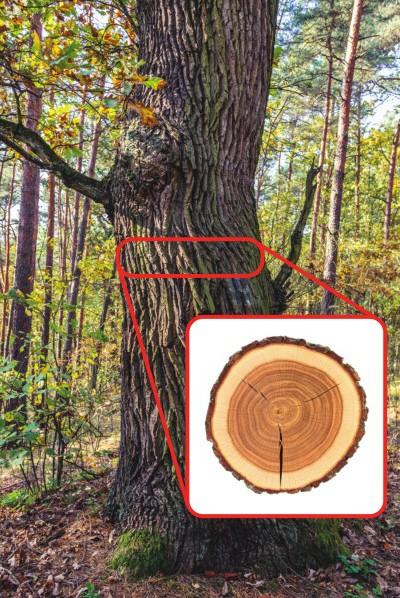


© Great Minds PBC 109
Why do you think some plants have shells around their seeds?


© Great Minds PBC
110
Why do you think some

plants have bark around the stem?

© Great Minds PBC
111
Why do you think some plants have prickles?


© Great Minds PBC
112
How do pond plants use their body parts to survive?

© Great Minds PBC
113
Visit Protective Plant Body

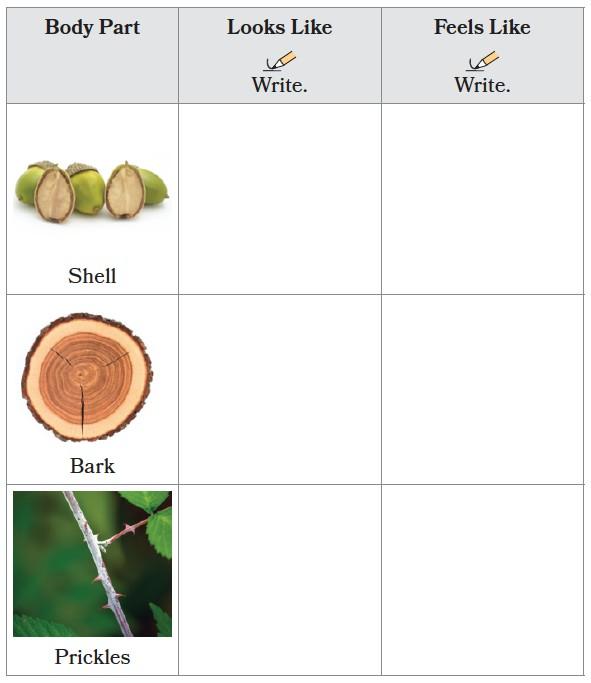
Part Stations
© Great Minds PBC
114 Logbook, page 11
Explain Plant Body Part Functions




© Great Minds PBC
115
Which of these animal body parts is hard like an acorn shell?




© Great Minds PBC
116
at Lesson 5 Activity
for help if needed.
Look back
Guide
Which animal body part reminds you of tree bark?




© Great Minds PBC
117
Look back at Lesson 5 Activity Guide for help if needed.
Which animal body part reminds you of prickles?




© Great Minds PBC
118
Look back at Lesson 5 Activity Guide for help if needed.
How do you think an acorn shell, tree bark, and prickles help plants?

© Great Minds PBC
119
What makes you think so?
Why do you think plants need protection?

© Great Minds PBC
120
Moose Video

© Great Minds PBC 121
Why or why not?

© Great Minds PBC
Do you think the water lilies would be able to survive if the moose ate all their leaves?
122
think



© Great Minds PBC
123
What do you
would happen if a moose tried to eat a plant that has bark or prickles?
Anchor Chart

© Great Minds PBC
124
Anchor Model

© Great Minds PBC
125
In your neighborhood, look for protective plant body parts. Explain the functions of these body parts to a family member or friend.

© Great Minds PBC
126 Homework
Lesson 9

© Great Minds PBC
Driving Question Board

© Great Minds PBC
128
Prepare for Conceptual Checkpoint

© Great Minds PBC
129
What do you know about yellowjackets?


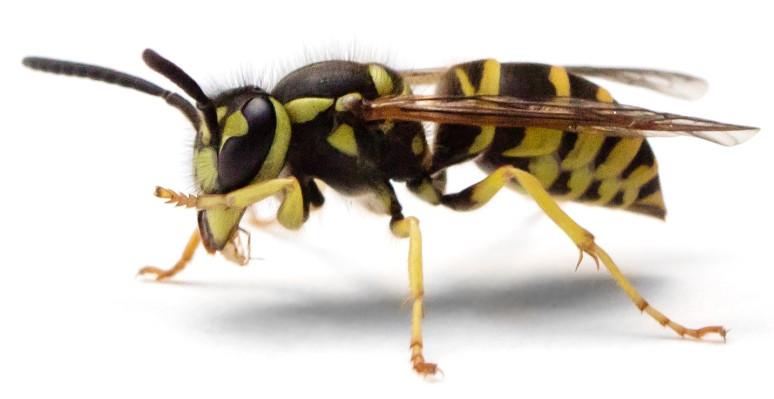
© Great Minds PBC
130
How does a yellowjacket use its body parts to survive?

© Great Minds PBC
131
Yellowjacket Video

© Great Minds PBC 132


© Great Minds PBC 133
Conceptual Checkpoint

© Great Minds PBC
134


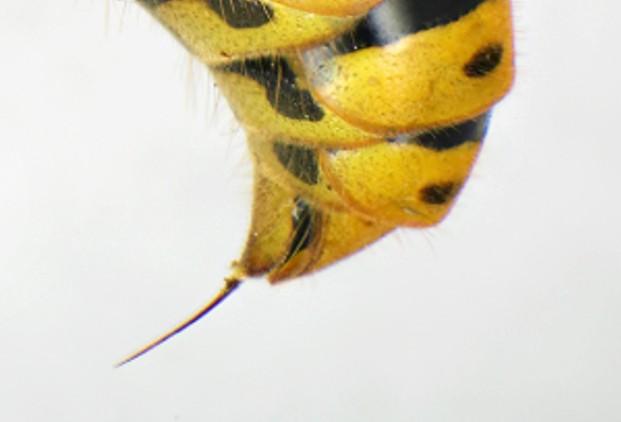
© Great Minds PBC 135
What does this body part look like? What do you think it feels like?
What are some ways a body part can help an animal survive?



© Great Minds PBC 136

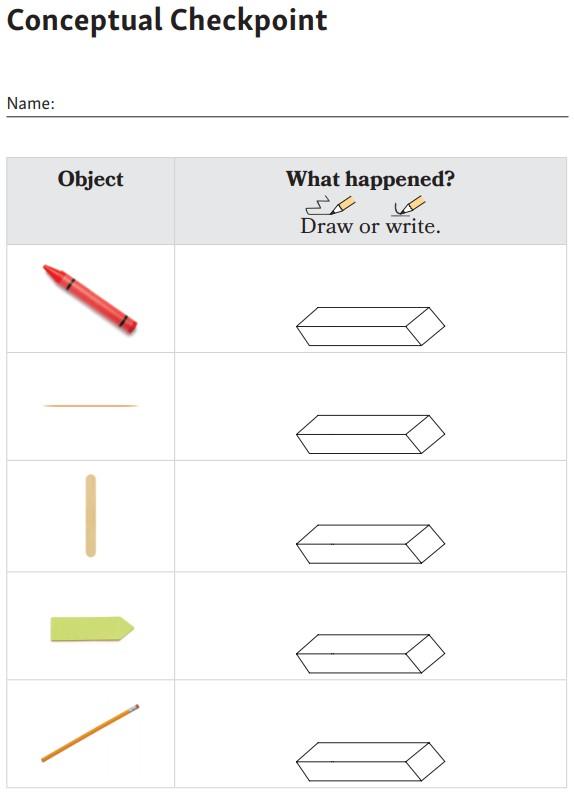
© Great Minds PBC
137
Which object is the best model of a stinger?
What is the function of a stinger?


© Great Minds PBC 138


© Great Minds PBC 139


© Great Minds PBC 140
Debrief Conceptual Checkpoint

© Great Minds PBC
141


© Great Minds PBC 142
How does a yellowjacket use its body parts to survive?

© Great Minds PBC
143

© Great Minds PBC
A yellowjacket lands on a pond plant.
144
A raccoon walks by and tries to eat the plant the yellowjacket is on.
How do you think the yellowjacket will use its body parts to survive?
Driving Question Board

© Great Minds PBC
145
What do you notice about our questions in the first column?
What have we learned about how pond plants and pond animals

© Great Minds PBC
146
use their body parts to survive?
Lesson 10

© Great Minds PBC
Notice and Wonder


© Great Minds PBC
148



© Great Minds PBC
149
How is the drawing like the picture of the red kite?
How is it different?
Which body part of a red kite do you think inspired da Vinci?

© Great Minds PBC
150
Why do you think a red kite’s wings inspired da Vinci to

© Great Minds PBC
151
draw his flying machine?
How can observing body parts help people solve problems?

© Great Minds PBC
152
Observe a Plant Body Part

© Great Minds PBC
153


© Great Minds PBC 154


© Great Minds PBC 155
About 80 years ago, a man named George de Mestral was hiking with his dog. He noticed that when his dog passed some plants, burrs stuck to the dog’s fur.

© Great Minds PBC
156
De Mestral looked closely at the burrs to find out why they stuck to the dog’s fur.
Let us take a closer look and see what he may have observed.

© Great Minds PBC
157
How did you describe the burrs?


© Great Minds PBC 158
Describe Different Fasteners


© Great Minds PBC
159 Logbook, page 13
Why
burrs inspire

Mestral
© Great Minds PBC
160
did
George de
to create his hook and loop fastener?
What is the function of a burr’s hooks?

© Great Minds PBC
161
what

fastener used?
© Great Minds PBC
162
In
ways have you seen a hook and loop
Has it helped you?
Key Term mimic to copy

© Great Minds PBC 163
How can observing body parts help people solve problems?

© Great Minds PBC
164
Look for other examples of human-made objects that mimic the functions of plant and animal body parts. List or draw these objects and the body parts.

© Great Minds PBC
165 Homework
Lesson 11

© Great Minds PBC



© Great Minds PBC 167 Logbook, page 15
Ask about an Engineering Problem

© Great Minds PBC
168




© Great Minds PBC 169
A group
of
scientists

is
making observations about
plants and animals in a pond. To get to the pond, the scientists must walk by plants that scratch their legs.

© Great Minds PBC
170
How can we help protect scientists at a pond?

© Great Minds PBC
171
What questions do you have about the problem?

© Great Minds PBC
172
How can we learn more about the scientists’ problem? How

© Great Minds PBC
173
can we answer our questions?
What do you remember about this plant?


© Great Minds PBC
174
What do you notice?

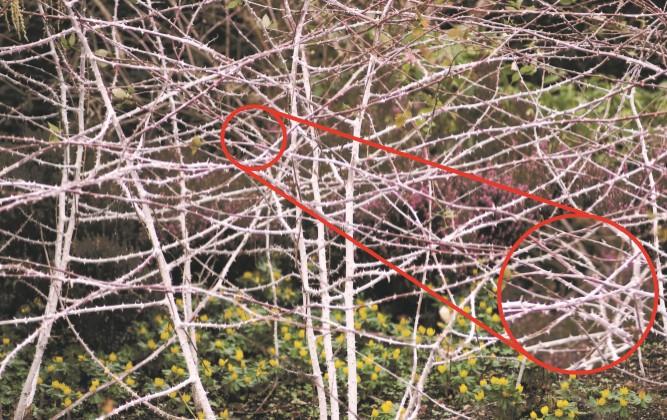
© Great Minds PBC
175
What do

think might happen
© Great Minds PBC
176
you
if you walked close to the plant?

© Great Minds PBC
177
What could we make to help protect the scientists from the prickles?


© Great Minds PBC
178
A group of scientists is making observations about the plants and animals in a pond. To get to the pond, the scientists must walk by plants that scratch their legs.


© Great Minds PBC 179 Logbook, page 17
Problem and Solution Chart
What is the scientists’ problem?

© Great Minds PBC
180
How will we create a solution to the scientists’ problem?

© Great Minds PBC
181
How will we know if our protective covering works?

© Great Minds PBC
182

© Great Minds PBC
183
How can we test each protective covering to find out if it works?
What will the test show if the protective covering works?

© Great Minds PBC
184
Problem and Solution Chart

© Great Minds PBC
185
Revisit Protective Body Parts
How can we help protect scientists at a pond?

© Great Minds PBC
186

© Great Minds PBC
187
How did da Vinci and de Mestral get ideas about how to make the flying machine and hook and loop fastener?

© Great Minds PBC
188
Do you think we can mimic the functions of plant and animal body parts to help protect the scientists?
Which body parts can we mimic?

© Great Minds PBC
189
Protective Body Parts Chart

© Great Minds PBC
190
Problem and Solution Chart

© Great Minds PBC
191




© Great Minds PBC 192
Lesson 12

© Great Minds PBC
Problem and Solution Chart

© Great Minds PBC
194
What is the problem we want to solve?

© Great Minds PBC
195
What will our solution be?

© Great Minds PBC
196
How will you know if your protective covering works?

© Great Minds PBC
197



© Great Minds PBC 198
Imagine a Protective Covering

© Great Minds PBC
199
Mestral

© Great Minds PBC
200
What do you think de
did to mimic the little hooks on a burr?




© Great Minds PBC 201

© Great Minds PBC
202
What could you do to these materials to help them protect better?


© Great Minds PBC 203

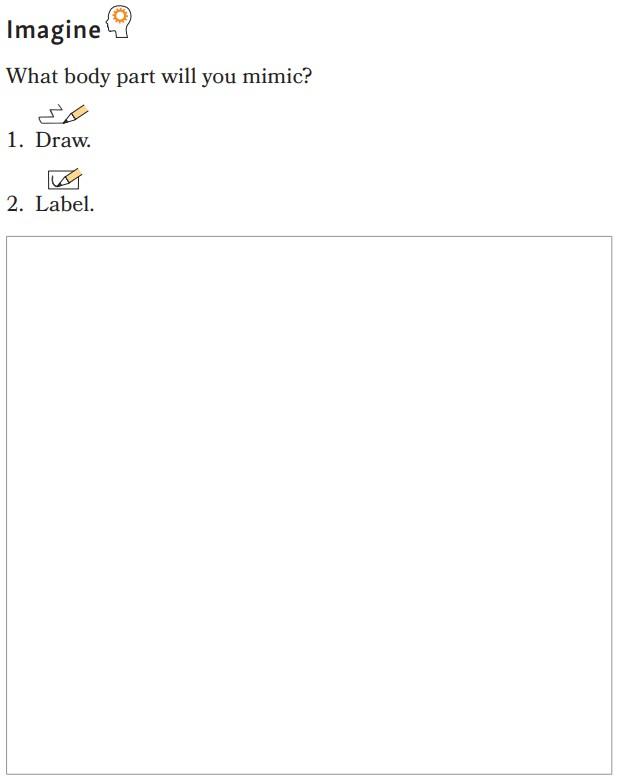
© Great Minds PBC 204 Logbook, page 18

© Great Minds PBC
205
How can you use the materials to make something that will protect the scientists’ legs like your chosen body part protects the plant or animal?
Plan a Protective Covering

© Great Minds PBC
206




© Great Minds PBC 207


© Great Minds PBC 208 Logbook, page 19





© Great Minds PBC 209
Lesson 13

© Great Minds PBC




© Great Minds PBC 211
Create a Protective Covering


© Great Minds PBC
212 Logbook, page 19
Test a Protective Covering


© Great Minds PBC 213 Logbook, page 20




© Great Minds PBC 214
Lesson 14

© Great Minds PBC




© Great Minds PBC 216
Brainstorm Improvements

© Great Minds PBC
217
Is your group’s covering good at protecting? Why or why not?

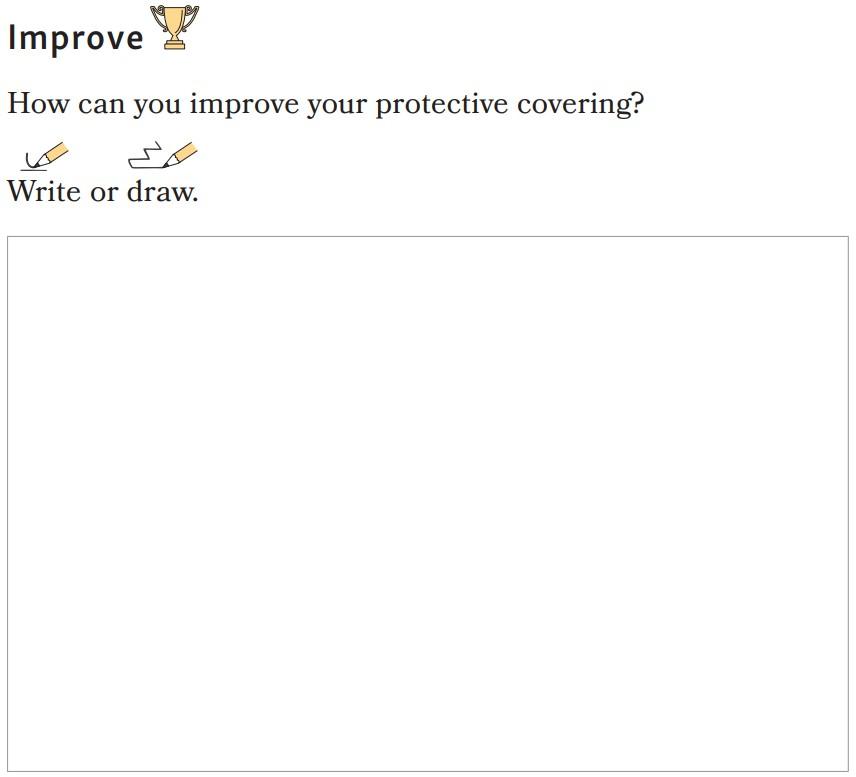
© Great Minds PBC 218 Logbook, page 21
How can your group improve your protective covering?

© Great Minds PBC
219
How do you think these improvements will help your protective covering work better?

© Great Minds PBC
220
Improve a Protective Covering


© Great Minds PBC
221 Logbook, page 21

© Great Minds PBC
222
What did you keep the same?
What did you change?

© Great Minds PBC
223
Did your protective covering work better after the changes? How do you know?
Choose a human-made object you use every day, such as a lunchbox or a shoe. Draw two versions you have observed of the same object. Compare and label details such as material, color, or shape.

© Great Minds PBC
224 Homework
Lesson 15

© Great Minds PBC




© Great Minds PBC 226
Prepare for a Presentation


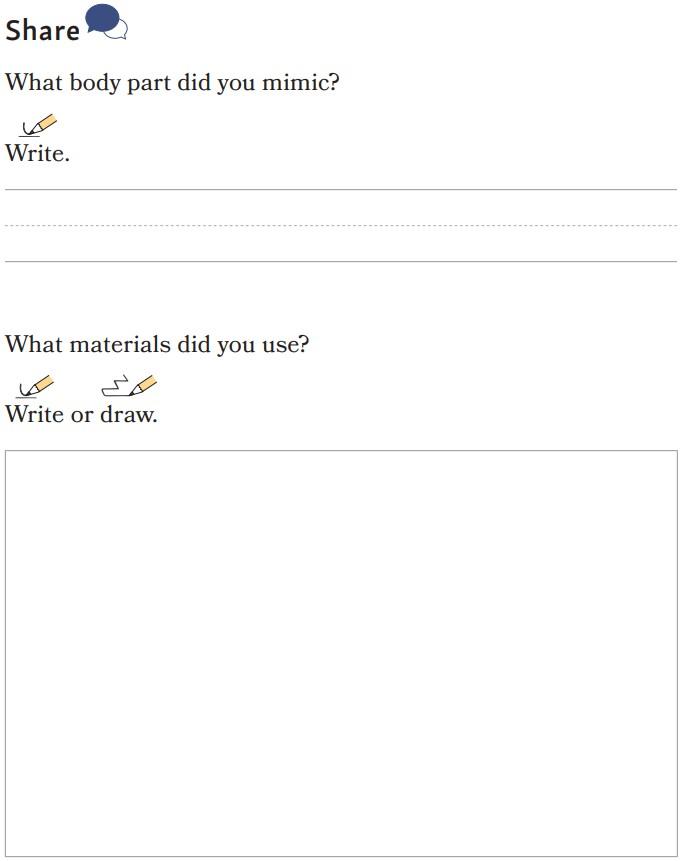
© Great Minds PBC
227 Logbook, pages 22–23
Share a Protective Covering

© Great Minds PBC
228
Which plant or animal body part did the group mimic?
How did the properties of the protective covering mimic the properties of the body part?

© Great Minds PBC 229
How are the protective coverings different?

© Great Minds PBC
230
How are the protective coverings similar?
How can we help protect scientists at a pond?

© Great Minds PBC
231

© Great Minds PBC
232
How did you use your knowledge of body parts and their functions to solve the scientists’ problem?
Lesson 16

© Great Minds PBC
Hide-and-Seek Activity

© Great Minds PBC
234
How

© Great Minds PBC
235
did you know where I was?
How
know where

© Great Minds PBC
236
did you
I was this time?
Key Term senses

a way an animal takes in details about its environment
© Great Minds PBC 237
Key Term sense

to notice details about an environment
© Great Minds PBC 238
Do you think other animals sense their environment?
Why do you think that?

© Great Minds PBC
239
What do you wonder about animals’ senses?

© Great Minds PBC
240
Driving Question Board

© Great Minds PBC
241
Do animals sense their environment?

© Great Minds PBC
242
Observe Heron Response

© Great Minds PBC
243
Heron Video

© Great Minds PBC 244
Do you think the heron senses something?

© Great Minds PBC
245
If so, what do you think it senses?
Key Term information a detail about something

© Great Minds PBC 246
What makes you think that the heron senses the fish?

© Great Minds PBC
247
Key Term response

an action that results from getting information
© Great Minds PBC 248
Develop Information and Response Chart

© Great Minds PBC
249
Observe Animal Responses

© Great Minds PBC
250


© Great Minds PBC 251 Logbook, page 25
Do you think the monkey senses something?

Why do you think that?
© Great Minds PBC
252
Do you think the dog senses something?
Why do you think that?

© Great Minds PBC
253
Do you think the hippopotamuses sense something?

© Great Minds PBC
254
Why do you think that?
Information and Response Chart

© Great Minds PBC
255
Do animals sense their environment?

© Great Minds PBC
256
Anchor Chart

© Great Minds PBC
257
Information and Response Chart

© Great Minds PBC
258
How do these responses help animals survive?

© Great Minds PBC
259
With adult supervision, observe your environment. Write or draw an example of an animal responding to something it senses.

© Great Minds PBC
260 Homework
Lesson 17

© Great Minds PBC

© Great Minds PBC
262
Which body parts do you think other animals use to sense information?
Observe Sensing in Videos

© Great Minds PBC
263
Monkey Video

© Great Minds PBC 264
Dog Video

© Great Minds PBC 265
Hippopotamus Video

© Great Minds PBC 266
out about

© Great Minds PBC
267
What did we find
how animals use their body parts to sense information?
Explain Crayfish Senses

© Great Minds PBC
268
What did you learn about how crayfish use their body parts to sense information?

© Great Minds PBC
269

© Great Minds PBC
Which body parts did the crayfish use to sense information?
270
Why do you think that?
How do you think sensing and responding to information helps crayfish survive?

© Great Minds PBC
271
Anchor Model

© Great Minds PBC
272
Lesson 18

© Great Minds PBC
Crossing Guard Video

© Great Minds PBC 274
How do the people driving the cars

© Great Minds PBC
275
know they should stop?
How do you think the family knows when

© Great Minds PBC
276
to cross the street?

© Great Minds PBC 277
communicate to send and receive information
Key Term
Do you

© Great Minds PBC
think other animals communicate with each other?
278
Why do you think that?
Why do you think animals communicate with each other?

© Great Minds PBC
279
Why do animals communicate?

© Great Minds PBC
280
Prepare for Modeling Activity



© Great Minds PBC
281




© Great Minds PBC 282
What do you think the lookout monkey will do next?

© Great Minds PBC
283
Model Vervet Monkey Responses

© Great Minds PBC
284
Vervet Monkey Response Chart

© Great Minds PBC
285
Vervet Monkey Activity

© Great Minds PBC
286
Why do

think vervet monkeys respond
© Great Minds PBC
287
you
to eagles by looking up and hiding?
Why do you think vervet monkeys respond to snakes by standing tall and looking down?

© Great Minds PBC
288
Why do you think vervet monkeys respond to leopards by

© Great Minds PBC
289
running up into trees and making loud noises?
How does communication help vervet monkeys?

© Great Minds PBC
290
“Vervet Monkey’s Escape Plans” Video

© Great Minds PBC 291
How was our modeling activity different from what happens in nature?

© Great Minds PBC
292
Beaver Video

© Great Minds PBC 293
How does the beaver use its tail to communicate?

© Great Minds PBC
294
What information do you think the beaver is trying to communicate?

© Great Minds PBC
295


© Great Minds PBC 296
Anchor Model

© Great Minds PBC
297
Why do animals communicate?
How does it help them?

© Great Minds PBC
298
Anchor Chart

© Great Minds PBC
299
Observe and record one example of a way a family member, teacher, or friend communicates to help someone else.

© Great Minds PBC
300 Homework
Lesson 19

© Great Minds PBC
What do you notice about the body parts of these plants?


© Great Minds PBC
302
Do you think the plants are getting what they need to survive?
What evidence supports your answer?

© Great Minds PBC
303
What do you wonder about the body parts of these plants?


© Great Minds PBC
304
Why do the leaves and stems grow this way?

© Great Minds PBC
305

© Great Minds PBC
306
Do you think plants respond to light in their environment?
Do plants respond to light in their environment?

© Great Minds PBC
307
Plan and Conduct Light Investigation

© Great Minds PBC
308
What do we need to add


© Great Minds PBC
309
to our box so it looks like the room in the picture?

© Great Minds PBC
Which way should we turn the box to make it look like the room in the picture?
310
Why do you think so?
Radish Plant Activity

© Great Minds PBC
311
Make Predictions

© Great Minds PBC
312
Think about the plants in the boxes with a side opening. Then think about the plants in the box with the top opening. Will they look different?

© Great Minds PBC
313

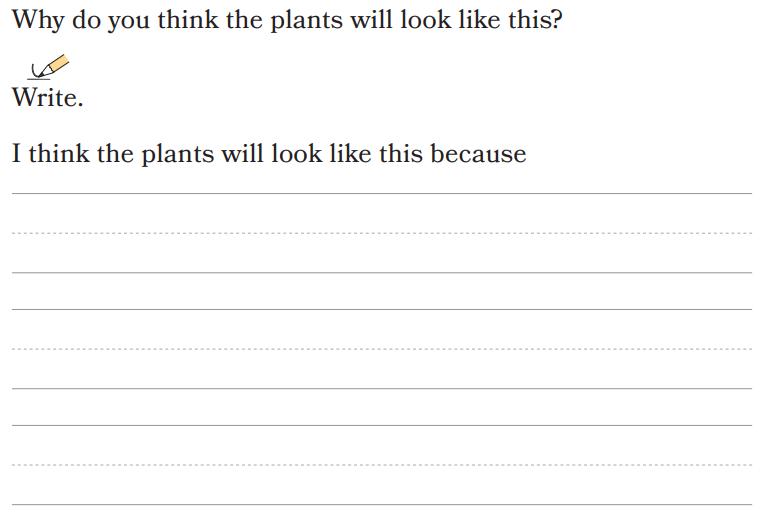

© Great Minds PBC 314 Logbook, pages 27–28
Do plants respond to light in their environment?

© Great Minds PBC
315
Lesson 20

© Great Minds PBC
Radish Plant Activity

© Great Minds PBC
317
Do plants respond to light in their environment?

© Great Minds PBC
318
Collect Radish Plant Data

© Great Minds PBC 319


© Great Minds PBC 320 Logbook, page 29

© Great Minds PBC
321
What did you notice about the plants you observed?


© Great Minds PBC 322 Logbook, page 29
Analyze Investigation Data

© Great Minds PBC
323


© Great Minds PBC 324 Logbook, page 30
Was your prediction correct? Why or why not?

© Great Minds PBC
325
How do
and

© Great Minds PBC
326
you think the leaves
stems of the radish plants will respond?
Analyze Plant Photographs

© Great Minds PBC
327
What is this plant’s response to light?

© Great Minds PBC
328
What evidence makes you think that?


© Great Minds PBC
329
Look at the plant’s leaves and stem. What is their response to light?


© Great Minds PBC
330
Look at the plant’s leaves and stem. What is their response to light?


© Great Minds PBC
331
Look at the plant’s leaves and stem. What is their response to light?
Do plants respond to light in their environment?

© Great Minds PBC
332
Why do you think so?
Anchor Model


© Great Minds PBC
333
Observe plants near your home. Share examples of their responses to light with a family member. If you have indoor plants near windows, ask for permission to turn the plants. Watch for responses over the next few days.

© Great Minds PBC
334 Homework
Lesson 21

© Great Minds PBC
Driving Question Board

© Great Minds PBC
336
Prepare for Conceptual Checkpoint

© Great Minds PBC
337
Mimosa Plant Video 1

© Great Minds PBC 338
Notice and Wonder

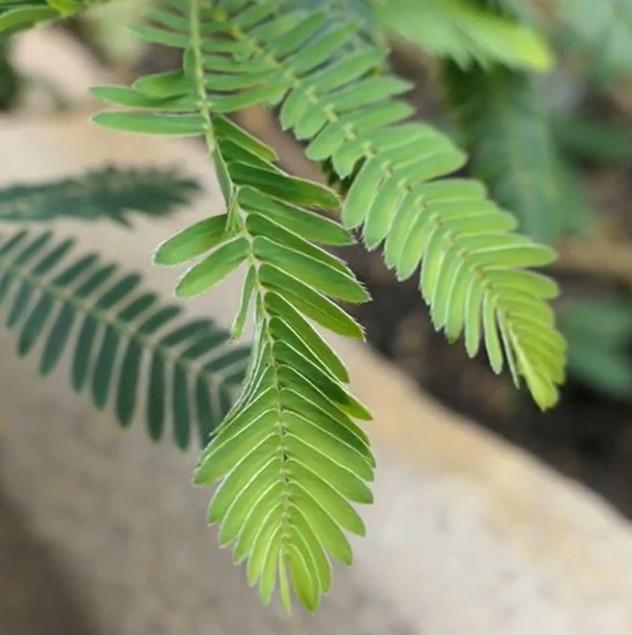
© Great Minds PBC
339
What do you think the plant is responding to?

© Great Minds PBC
340

© Great Minds PBC
341
What causes the leaves of a mimosa plant to close?
Conceptual Checkpoint

Card Sort Activity
© Great Minds PBC
342
What is similar about the pictures?

© Great Minds PBC
343



© Great Minds PBC 344
Debrief Conceptual Checkpoint

© Great Minds PBC
345
Mimosa Plant Video 2

© Great Minds PBC 346
Do you think all plants respond to touch this way?
Why or why not?

© Great Minds PBC
347
What are some ways you have seen plants respond to their environment?

© Great Minds PBC
348
How might closing its leaves help a mimosa plant survive?

© Great Minds PBC
349
Anchor Chart

© Great Minds PBC
350
Driving Question Board

© Great Minds PBC
351
Share one example of a plant or animal responding to its environment.

© Great Minds PBC
352
Lesson 22

© Great Minds PBC
What differences do you notice between radish plants and mimosa plants?



© Great Minds PBC
354
you

© Great Minds PBC
355
Do
think the world also has many different kinds of animals?

© Great Minds PBC
356
Do you think plants or animals of the same kind look the same?

© Great Minds PBC
357
How do the same kind of plants or animals compare with each other?
Observe Similarities between Plants or Animals of the Same Kind

© Great Minds PBC
358
Similarities and Differences Chart

© Great Minds PBC
359
How are the raccoons alike?

© Great Minds PBC
360
Key Term feature
an important part of someone or something

© Great Minds PBC 361
Observe Differences between Plants or Animals of the Same Kind

© Great Minds PBC
362
Are both raccoons exactly alike?
How can you tell?

© Great Minds PBC
363
Similarities and Differences Chart

© Great Minds PBC
364

© Great Minds PBC
365
How do the same kind of plants or animals compare with each other?

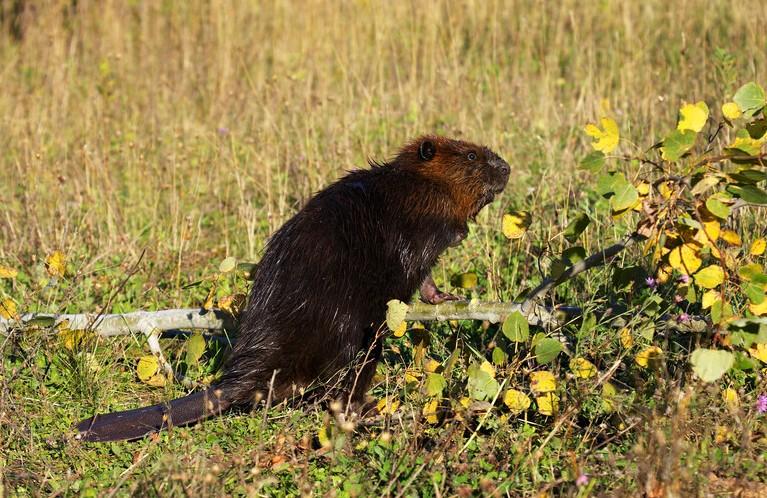
© Great Minds PBC 366
How did you decide what kind of animal

© Great Minds PBC
367
is in the mystery animal picture?

© Great Minds PBC
368
Do you think we saw this beaver earlier in the lesson?
With an adult, observe plants or animals of the same kind in your environment.
Choose two plants or two animals of the same kind. Describe the features that are similar and different.

© Great Minds PBC
369 Homework
Lesson 23

© Great Minds PBC
Do you think these two animals are

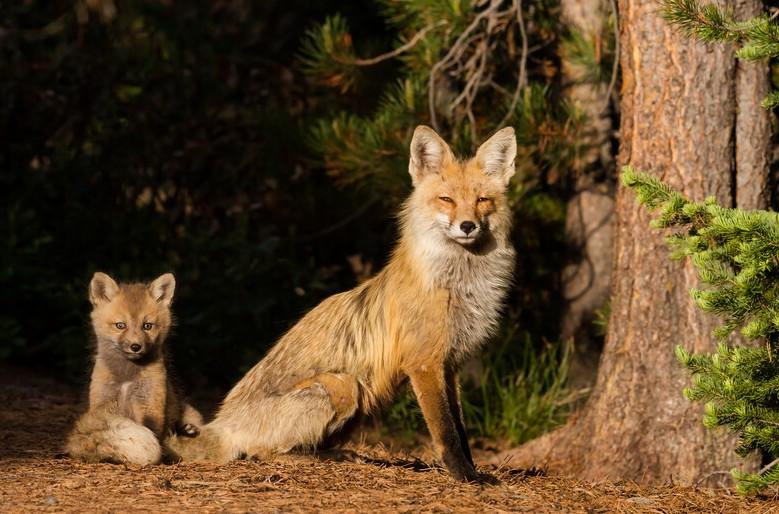
© Great Minds PBC
the same kind of animal?
371
Why or why not?
Key Term offspring
the babies of a plant or animal

© Great Minds PBC 372

© Great Minds PBC
373
Do you think other offspring look similar to their parents?
How do the same kind of plants or animals compare

© Great Minds PBC
374
with each other?
Identify Similarities between Animal Parents and Offspring




© Great Minds PBC
375
How are the parents and offspring similar?

© Great Minds PBC
376
Are the parents and offspring exactly alike? How do you know?

© Great Minds PBC
377
Match a Plant Parent and Offspring

© Great Minds PBC
378
Do you think plant offspring look similar to their parents?
Plant Parent and Offspring Activity

© Great Minds PBC
379

© Great Minds PBC
380
Why do you think the young radish plants belong to the plant parent you chose?

© Great Minds PBC
381
What made you decide that the young radish plants did not belong to the other plant parents?
Anchor Chart

© Great Minds PBC
382
How do the same kind of plants or animals compare

© Great Minds PBC
383
with each other?
Lesson 24

© Great Minds PBC
What do animals need to survive?

© Great Minds PBC
385

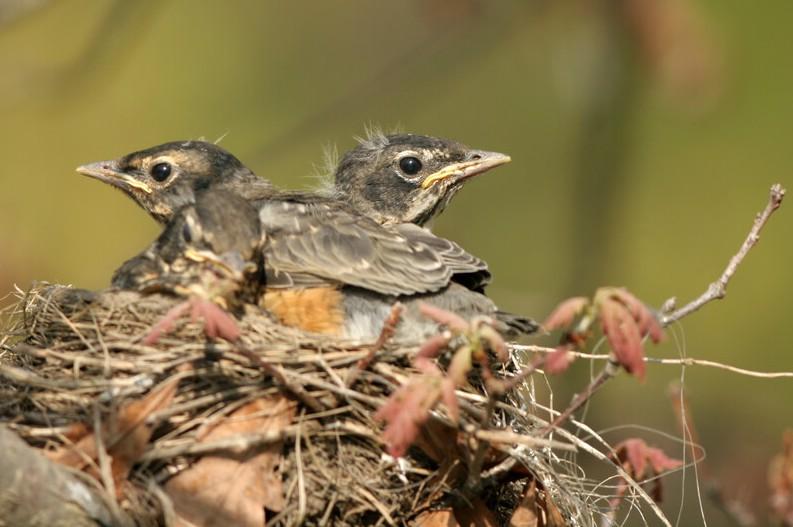
© Great Minds PBC
386
How do you think baby robins get what they need to survive?
What do you wonder about how robin offspring survive?

© Great Minds PBC
387
How do offspring survive?

© Great Minds PBC
388
Analyze Storyboards

© Great Minds PBC
389
What is happening in the robin storyboard?

© Great Minds PBC
390
What is happening in the dragonfly storyboard?

© Great Minds PBC
391
What is similar about the storyboards?

© Great Minds PBC 392
What is different about the storyboards?

© Great Minds PBC 393

© Great Minds PBC
394
Why do you think the robin storyboard shows a parent robin but the dragonfly storyboard does not show a parent dragonfly?
Storyboard Chart



© Great Minds PBC
395
Sort Storyboards

© Great Minds PBC
396
Do you think other animal offspring get help from their parents?
Why or why not?

© Great Minds PBC
397
Storyboard Chart





© Great Minds PBC
398
How do the parents in each storyboard help their offspring?

© Great Minds PBC
399
Why do you think the parents help their offspring in these ways?

© Great Minds PBC
400
Key Term behavior

© Great Minds PBC 401
the way an animal acts or the way it responds to its environment
How do offspring survive?

© Great Minds PBC
402
Lesson 25

© Great Minds PBC
Robin Video

© Great Minds PBC 404
What does the robin parent do to help its offspring survive?

© Great Minds PBC
405
How

© Great Minds PBC
406
do you think the robin parent knows to behave this way?
Analyze Storyboards

© Great Minds PBC
407
Act Out Parent and Offspring Behaviors

© Great Minds PBC
408
Parent Sense and Response Chart

© Great Minds PBC
409
How do the behaviors of the parents and offspring help the offspring survive?
What is similar about what the parents sense?

© Great Minds PBC
410
What is different about what the parents sense?

© Great Minds PBC
411
Anchor Chart

© Great Minds PBC
412
Anchor Model

© Great Minds PBC
413
Choose an animal and research its early life.
Create a storyboard that shows an example of how that animal survives at a young age, either with or without a parent’s help.

© Great Minds PBC
414 Homework
Lesson 26

© Great Minds PBC
Driving Question Board

© Great Minds PBC
416
Prepare for Conceptual Checkpoint

© Great Minds PBC
417
Which parent do you think Offspring A belongs to?


Why do you think that?
© Great Minds PBC
418
How do parents and offspring compare with each other?

© Great Minds PBC
419
Conceptual Checkpoint Part A

Parent and Offspring Chart


© Great Minds PBC
420


© Great Minds PBC 421
Conceptual Checkpoint Part B

© Great Minds PBC
422
Swan Video

© Great Minds PBC 423
What do you think is happening in the video?

© Great Minds PBC
424


© Great Minds PBC 425
Debrief Conceptual Checkpoint

© Great Minds PBC
426
How do parents and offspring compare with each other?

© Great Minds PBC
427
Driving Question Board

© Great Minds PBC
428
How do parents help their offspring survive?

© Great Minds PBC
429
Share one example of an animal parent helping its offspring survive.

© Great Minds PBC
430
How do pond plants and pond animals survive in their environment?

© Great Minds PBC
431
Lesson 27

© Great Minds PBC
Link Up Activity
How do these words relate?

© Great Minds PBC
433
Prepare for Socratic Seminar

© Great Minds PBC
434
How do pond plants and pond animals survive in their environment?


© Great Minds PBC
435
Engage in Socratic Seminar

© Great Minds PBC
436

© Great Minds PBC
437
What did you do to build your knowledge?
You have learned a lot about how pond plants and pond animals survive in their environment.
What

© Great Minds PBC
438
did you do in this work?
What is the same about what you did?
What is different?

© Great Minds PBC
439
Lesson 28

© Great Minds PBC
Koala Observations

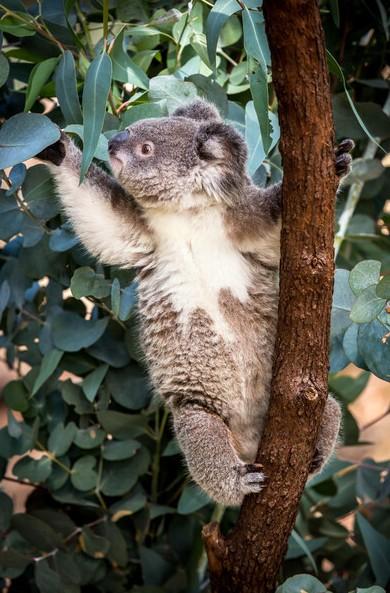
© Great Minds PBC 441
What kind of food do koalas eat?

© Great Minds PBC
442
What do eucalyptus leaves smell like?

© Great Minds PBC
443
Notice and Wonder


Copyright © 2021 Great Minds PBC 444
Koala Video

© Great Minds PBC 445

© Great Minds PBC
446
What is the koala in the video doing?

© Great Minds PBC 447
Why do you think the koala smells the leaves before eating them?
How does a koala use its body parts to find and take in food?

© Great Minds PBC
448
Complete End-of-Module Assessment

© Great Minds PBC
449


© Great Minds PBC 450


© Great Minds PBC 451


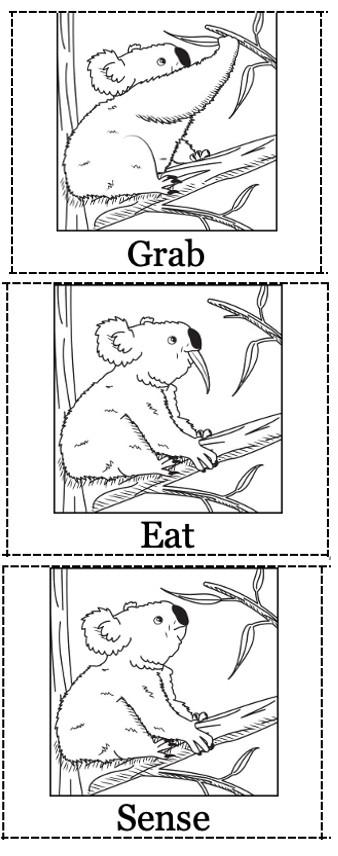
© Great Minds PBC 452


© Great Minds PBC 453
Lesson 29

© Great Minds PBC
Koala Video

© Great Minds PBC 455
Debrief End-of-Module Assessment
I notice . That makes me wonder ____.
I notice . That makes me think ____.
I used to think ____. Now I think ____.

© Great Minds PBC
456
Reflect on Crosscutting Concepts in Module Learning

© Great Minds PBC
457


© Great Minds PBC
458
What are some plant and animal body parts with properties that make them good at their functions?
How did the lens of Structure and Function

© Great Minds PBC
459
help you understand this phenomenon?
Driving Question Board

© Great Minds PBC
460
Draw a picture of a plant or animal that lives in the environment around your home.
Share your drawing with your family or classmates. Describe how you think the plant or animal survives in its environment.

© Great Minds PBC
461 Homework
British Broadcasting Corporation (BBC). 2014. “Vervet Monkey’s Escape Plans,” episode 2, Talk to the Animals.
Featuring Lucy Cooke. BBC One. Video 1:03, posted July 13, 2014. https://www.youtube.com/watch?v=q8ZG8Dpc8mM.
Messner, Kate, and Christopher Silas Neal (illustrator). 2017. Over and Under the Pond. San Francisco: Chronicle Books.
National Association of Biology Teachers (NABT). 2019. “NABT Position Statement: The Use of Animals in Biology Education.” Accessed February 5, 2021.
https://nabt.org/Position-Statements-The-Use-of-Animals-in-Biology-Education.

National Governors Association Center for Best Practices, Council of Chief State School Officers (NGA Center, CCSSO). 2010a. Common Core State Standards for English Language Arts & Literacy in History/Social Studies, Science, and Technical Subjects. Washington, DC: NGA Center, CCSSO.
National Governors Association Center for Best Practices, Council of Chief State School Officers (NGA Center, CCSSO). 2010b. Common Core State Standards for Mathematics. Washington, DC: NGA Center, CCSSO.
NGSS Lead States. 2013. Next Generation Science Standards: For States, By States (NGSS). Washington, DC: The National Academies Press.
Pijnacker01. 2016. “Sheep vs Swans.” YouTube video, 5:50, posted April 28, 2016. https://www.youtube.com/watch?v=xpH0opMSk9M.
© Great Minds PBC 462
References
Credits (slide 1 of 3)
Great Minds® has made every effort to obtain permission for the reprinting of all copyrighted material. If any owner of copyrighted material is not acknowledged herein, please contact Great Minds for proper acknowledgment in all future editions and reprints of this presentation.
Slides 1, 14, Paul Klee, Fish Magic, 1925. Courtesy Philadelphia Museum of Art, The Louise and Walter Arensberg Collection, 1950; slides 5, 435, Rusya007/Shutterstock.com; slide 10 (center), Bill Roque/Shutterstock.com, (right), Joe Regan/Moment/Getty Images; slide 33, Courtesy Walden Woods Project; slide 39, Heron video by John and Janet Foster/Getty Images; slide 41, Minnows video by Chatchai Somwat/Shutterstock.com; slide 43, Porcupine video by mlharing/Getty Images; slide 56, Enn Li Photography/Getty Images; slides 51, 61 (from top, left), 115–118 (from left), wrangel/Getty Images, USFWS/SCIENCE SOURCE, Ted Kinsman/SCIENCE SOURCE; slide 51 (from top, center), Jim Zuckerman/Getty Images, Tze-hsin Woo/Getty Images, Arthur Morris/Getty Images; slide 51 (from top, right), Arco Images GmbH/Alamy Stock Photo, Ben Neumann/Getty Images, Cat Hammond/Shutterstock.com; slides 106, 107, "Cattails Plant" photo by Jim Rathert, courtesy Missouri Department of Conservation; slides 109 (left), 110, geogif/Shutterstock.com, (inset) Martin Shields/SCIENCE SOURCE; slides 109 (center), 111, Fotokon/Shutterstock.com, (inset) Fekete Tibor/Shutterstock.com; slides 109 (right), 112, Geoff Kidd/SCIENCE SOURCE, (inset) J Need/Shutterstock; slide 114 (from top), Martin Shields/SCIENCE SOURCE, Fekete Tibor/Shutterstock.com, J Need/Shutterstock; slide 121, Moose Eating Water Lilies video by Discover Access/Getty Images; slide 123, (left), Fotokon/Shutterstock.com, (inset) Fekete Tibor/Shutterstock.com; slides 123 (right), 174, Geoff Kidd/SCIENCE SOURCE, (inset) J Need/Shutterstock; slide 130, Melinda Fawver/Shutterstock.com; slide 132, Yellowjacket Nest video by CHP Media/Shutterstock.com; slides 133, 142, IADA/Shutterstock.com;

© Great Minds PBC 463
Credits (slide 2 of 3)
slides 135, 136, Courtesy Matthias Buck/Canadian Journal of Arthropod Identification; slides 137 (from top), 138 (from left), Mtsaride/Shutterstock.com, DeawSS/Shutterstock.com, natrot/Shutterstock.com, MyImages – Micha/Shutterstock.com, You Touch Pix of EuToch/Shutterstock.com; slides 148, 149 (left), "Armature for the Wing of the Flying Machine" by Leonardo da Vinci, Image by Pictures Now/Alamy Stock Photo; slide 149 (right), Werner Baumgarten/Shutterstock.com; slide 154, rodimov/Shutterstock.com; slides 155, 158, R-Tvist/Shutterstock.com; slides 170, 178, Ivan Chudakov/Shutterstock.com; slide 175, flowerphotos/Alamy Stock Photo; slide 203 (clockwise, from top left), wrangel/Getty Images, Ted Kinsman/SCIENCE SOURCE, Enn Li Photography/Getty Images, USFWS/SCIENCE SOURCE, Andia/Alamy Stock Photo, Fekete Tibor/Shutterstock.com, Martin Shields/SCIENCE SOURCE; slide 244, Heron at a Pond video by Wide Lens Films/Shutterstock.com; slide 251 (from top), apple2499/Shutterstock.com, Grisha Bruev/Shutterstock.com, Marcel Brekelmans/Shutterstock.com; slide 264, Monkey by the Water video by skynesher/Getty Images; slide 265, Dog in the Snow video by SVPhilon/Getty Images; slide 266, Hippos at a River video by Allstar Picture Library/Getty Images; slide 274, Crossing Guard video by NewsHour Productions–2010/10 MR ED/E/Getty Images; slide 281 (left), Chad Wright Photography/Shutterstock.com, (right), SouWest Photography/Shutterstock.com; slide 282 (left), Lubos Chlubny/Shutterstock.com, (center) nwdph/Shutterstock.com, (right), Ryan M. Bolton/Shutterstock.com; slide 291, Vervet Monkey Tries to Escape video by Fremantle Media; slide 293, Beaver Swimming video by Aleksey Krasnov/Shutterstock.com; slide 296, Photo by Dianne Stankiewicz; slides 302, 304, 309, John Kaprielian/SCIENCE SOURCE; slides 329, 330, Martin Shields/SCIENCE SOURCE;

© Great Minds PBC
464
slide 331, PHOTO RF / SCIENCE SOURCE; slide 333, Chlotus/Shutterstock.com; slides 338, 339, Mimosa Plant Response 1 video by coldaf79/Shutterstock.com; slide 346, Mimosa Plant Response 2 by fuzzfocus/Shutterstock.com; slide 354 (left), Tiplyashina Evgeniya/Shutterstock.com, (right), AjayTvm/Shutterstock.com; slide 366, James Hager/Robert Harding/Getty Images; slide 371, Kelp Grizzly Photography/Shutterstock.com; slide 375 (from left), Betty4240/Getty Images, Robert McGouey/age Fotostock, David Spates/Shutterstock.com; slide 386, Martha Marks/Shutterstock.com; slide 404, Robin Parent and Offspring video by slide Angele Sicard/Shutterstock.com; slide 418, Frank Derer/SCIENCE SOURCE; slide 423, Swan Parent Behavior video by David Dilling; slides 441, 444, Chris de Blank/Alamy Stock Photo; slides 445, 455, Koala and Eucalyptus video by Lucas T. Jahn/Shutterstock.com; slide 450 (eye and nose), Yatra/Shutterstock.com, (hand) Shir's Travel Photography/Shutterstock.com, (mouth), LIGHTITUP/Shutterstock.com; slide 451, mark higgins/Shutterstock.com; slide 453 (top), COULANGES/Shutterstock.com, bottom (from left), Anubhab Roy/Shutterstock.com, Victoria Tucholka/Shutterstock.com, mizy/Shutterstock.com
All other images are the property of Great Minds.

© Great Minds PBC
465
Credits (slide 3 of 3)











































































































